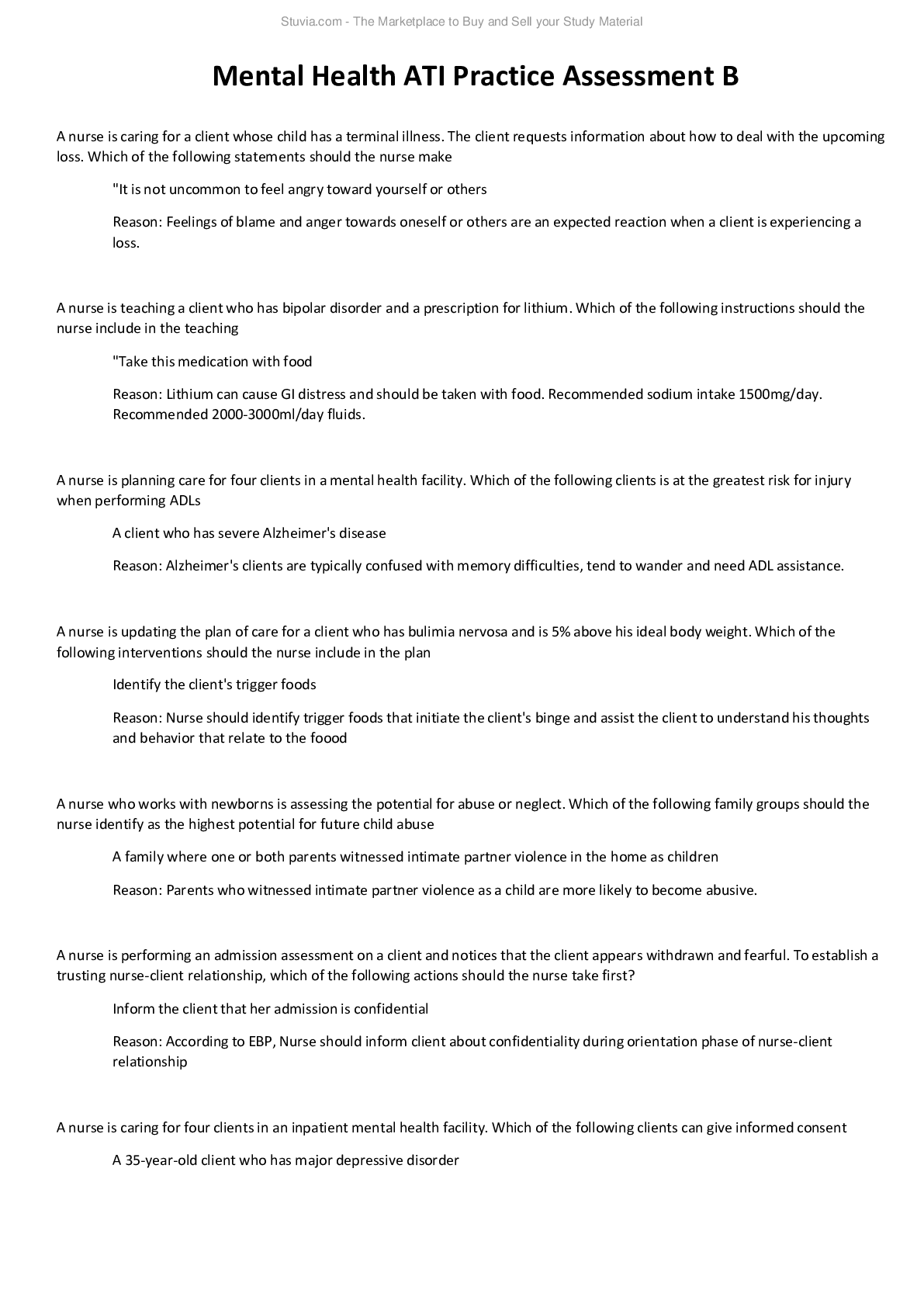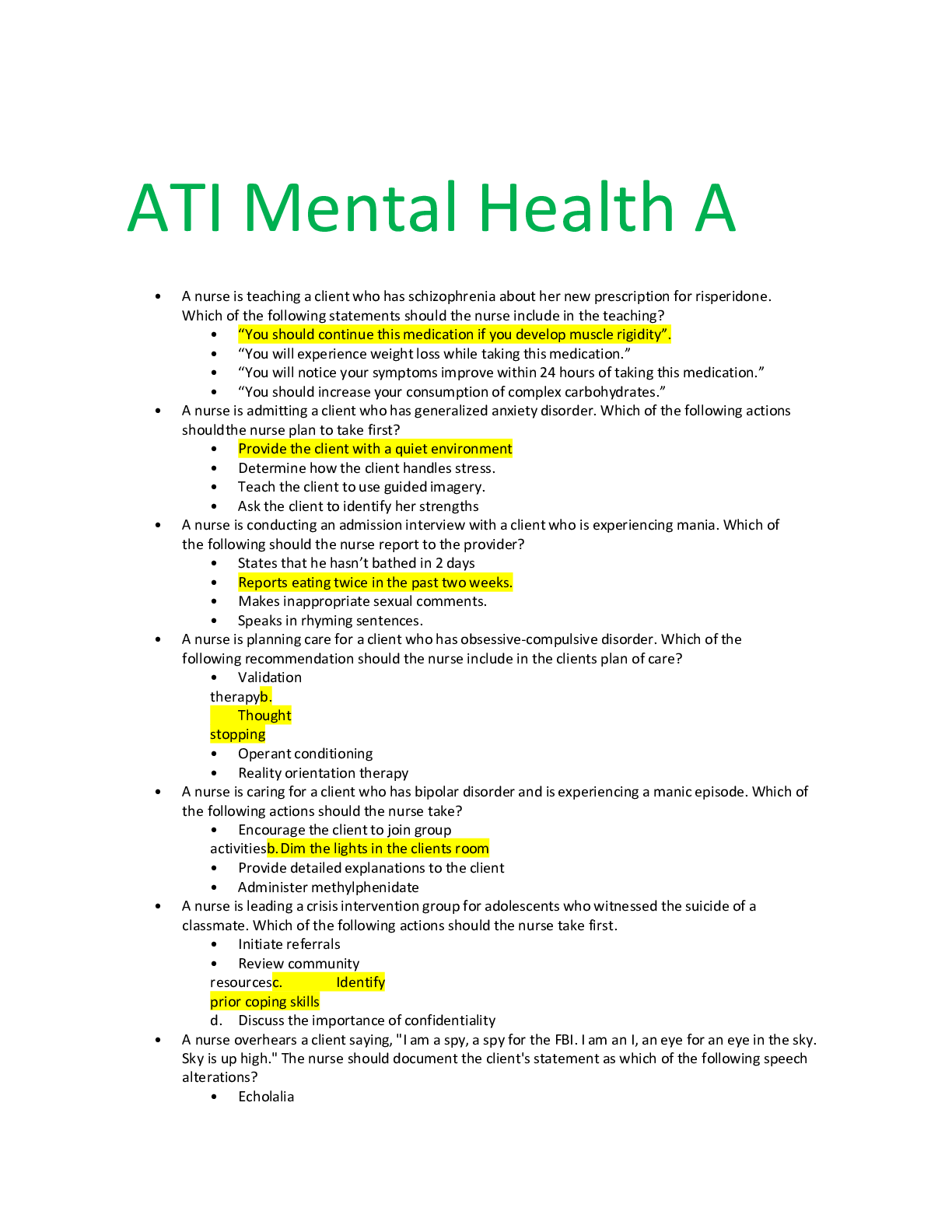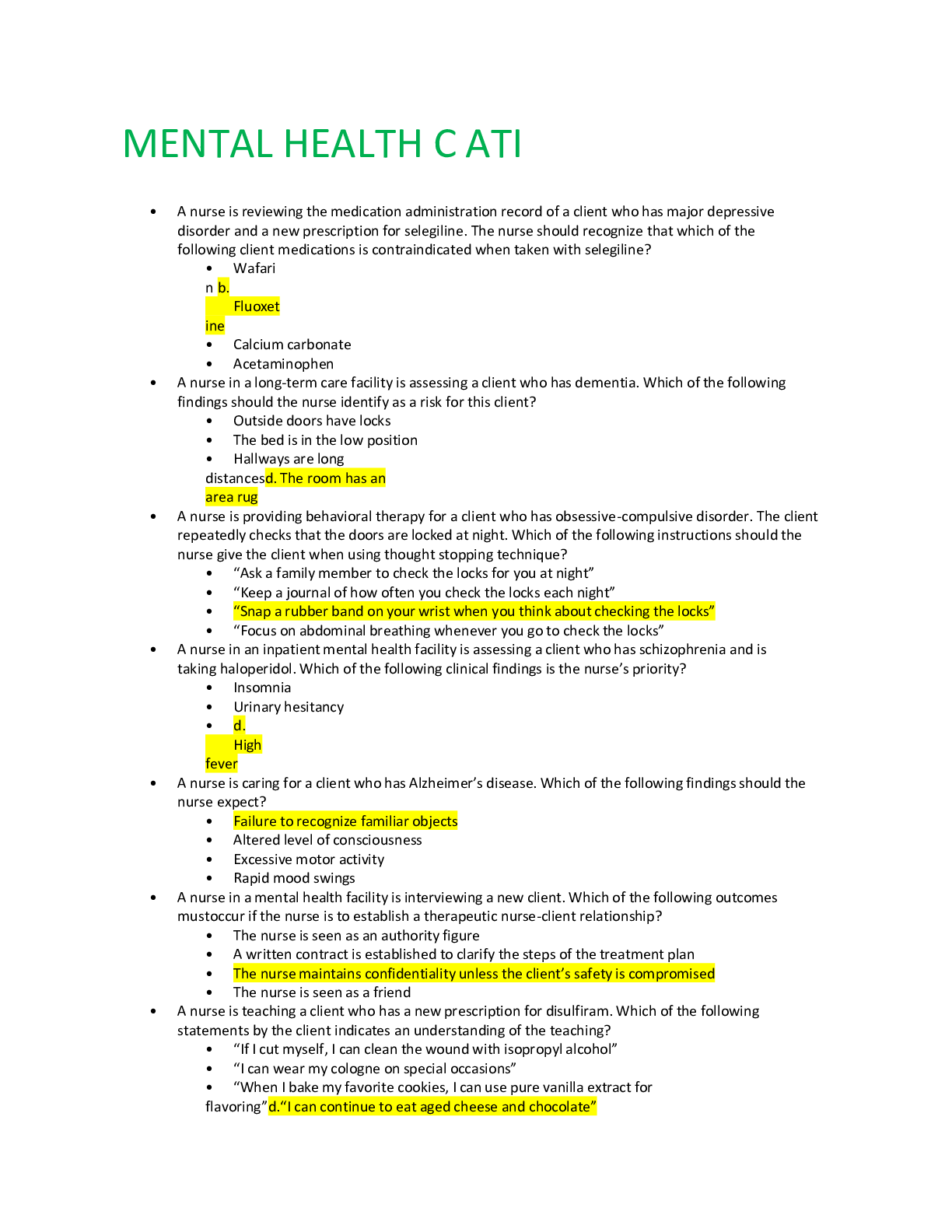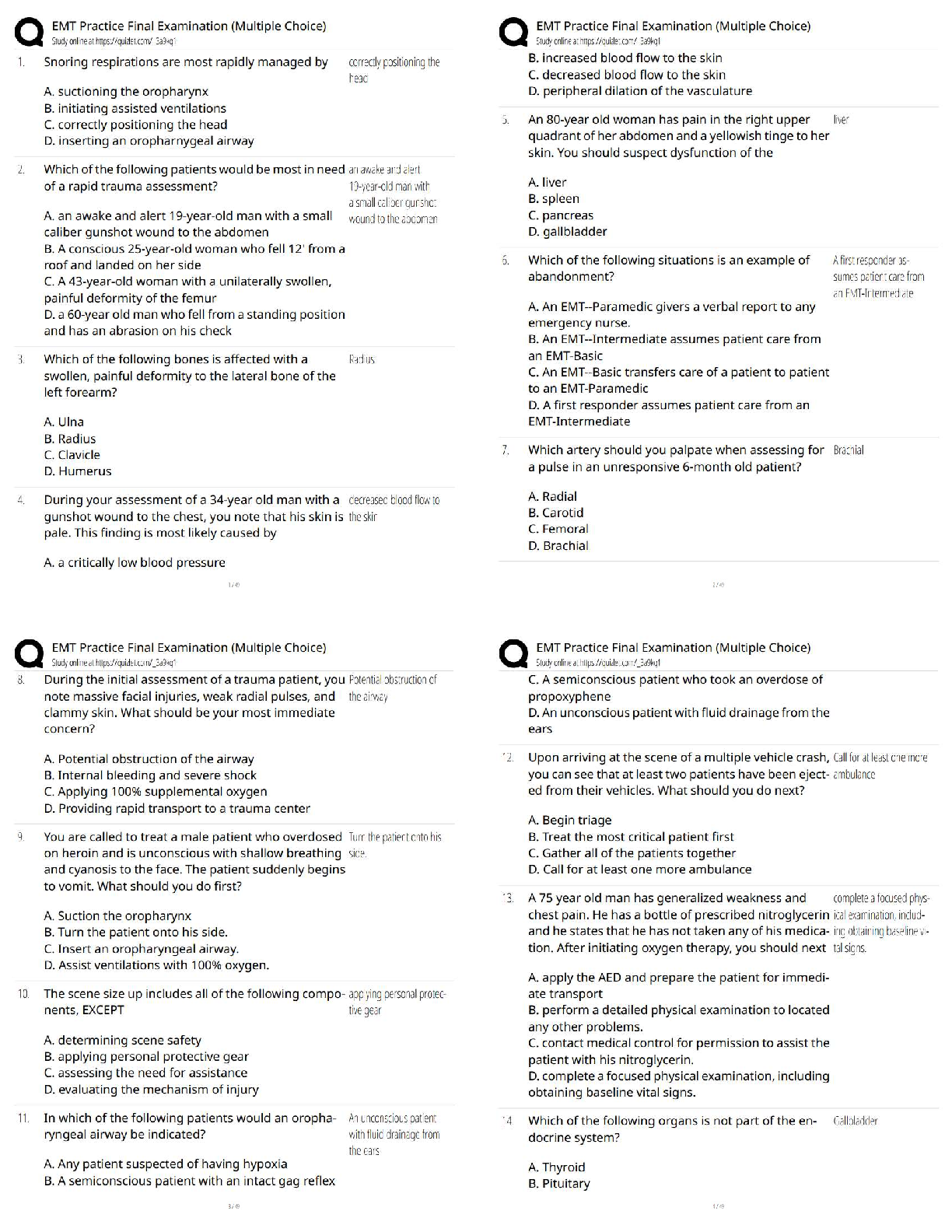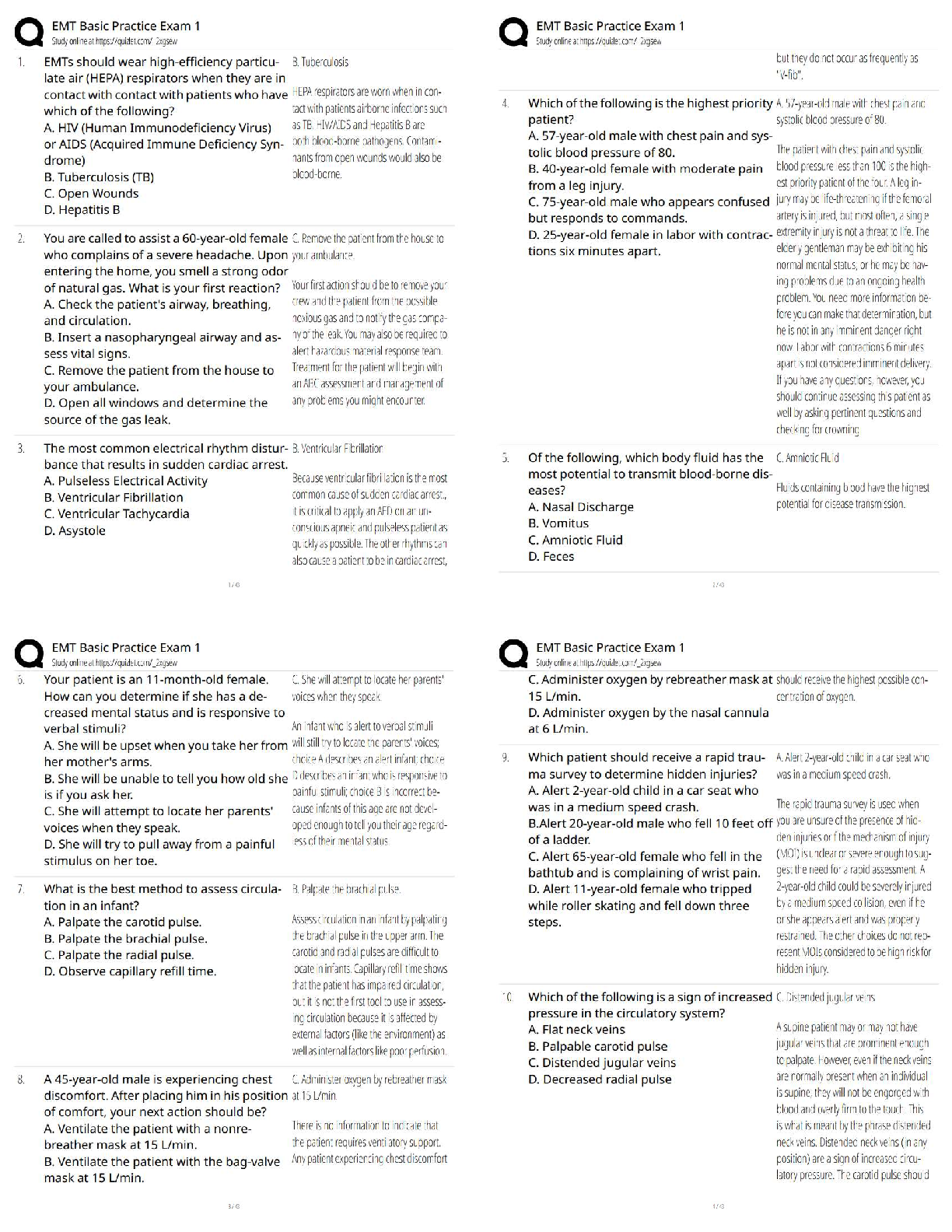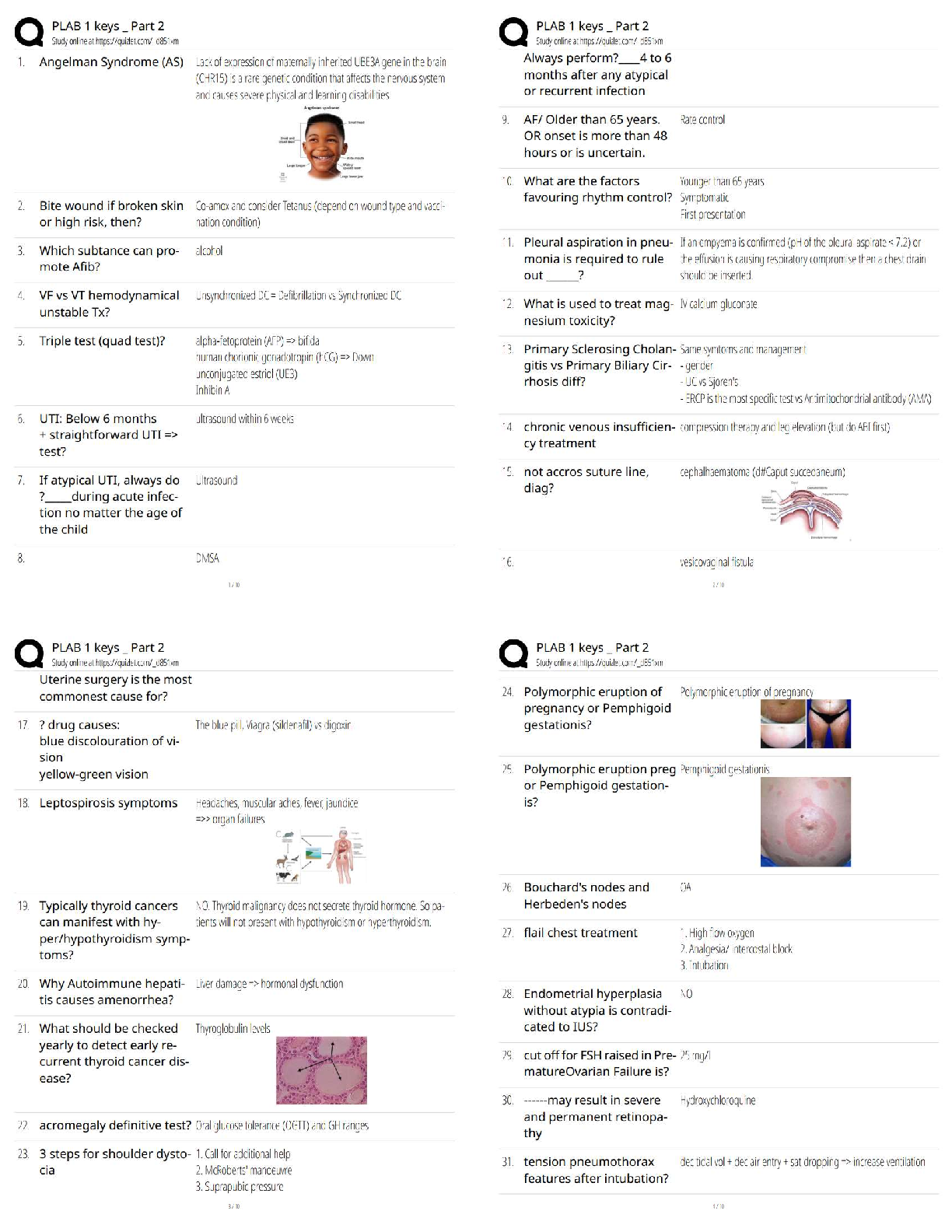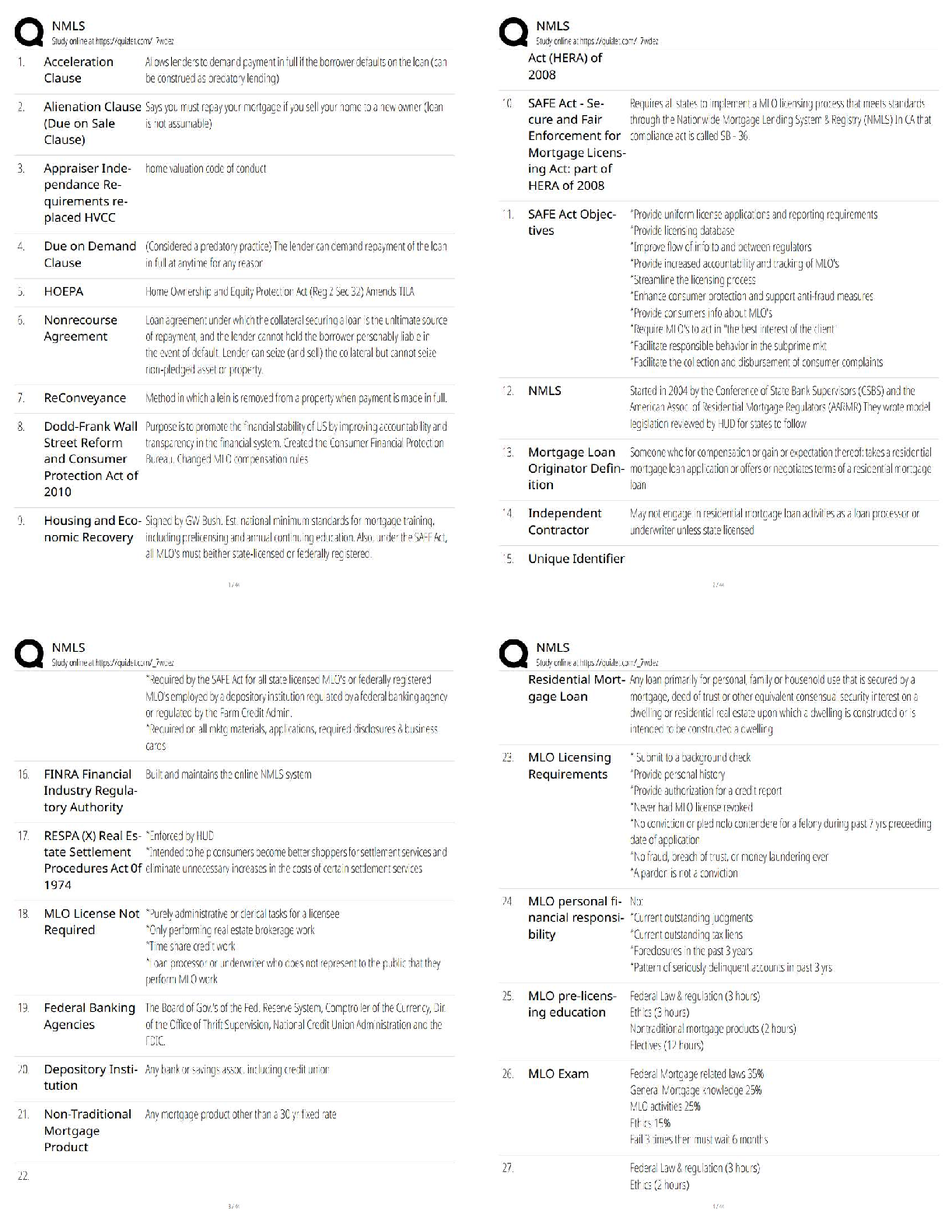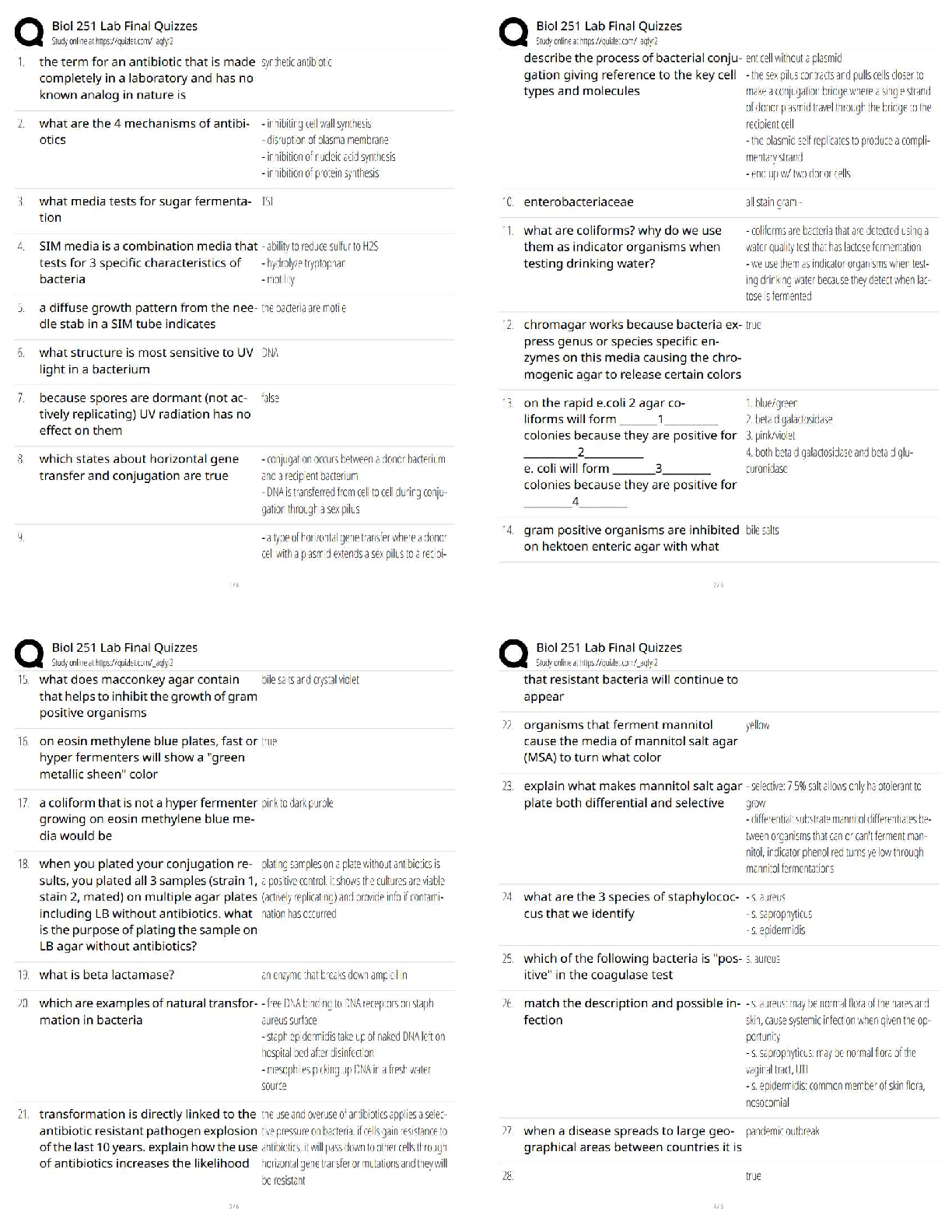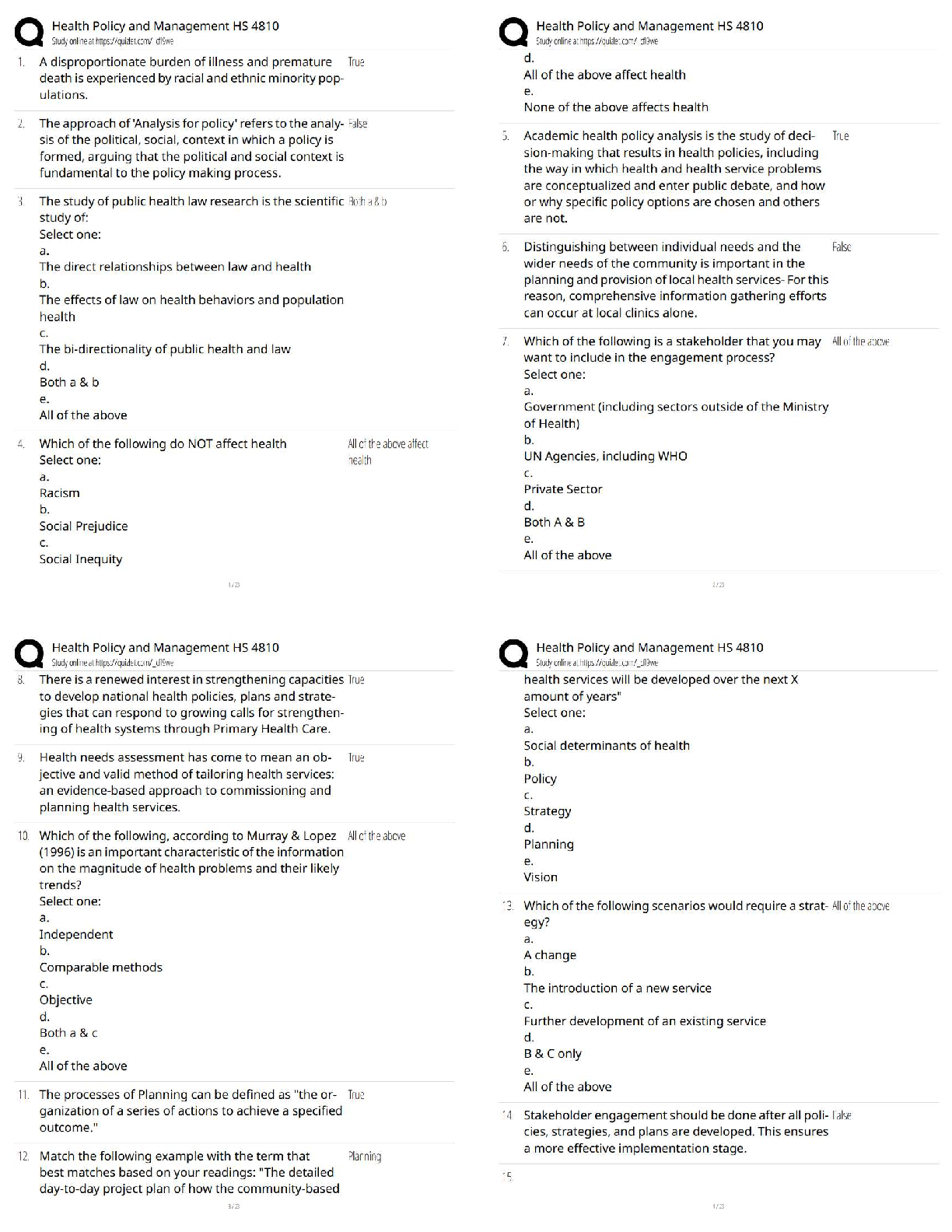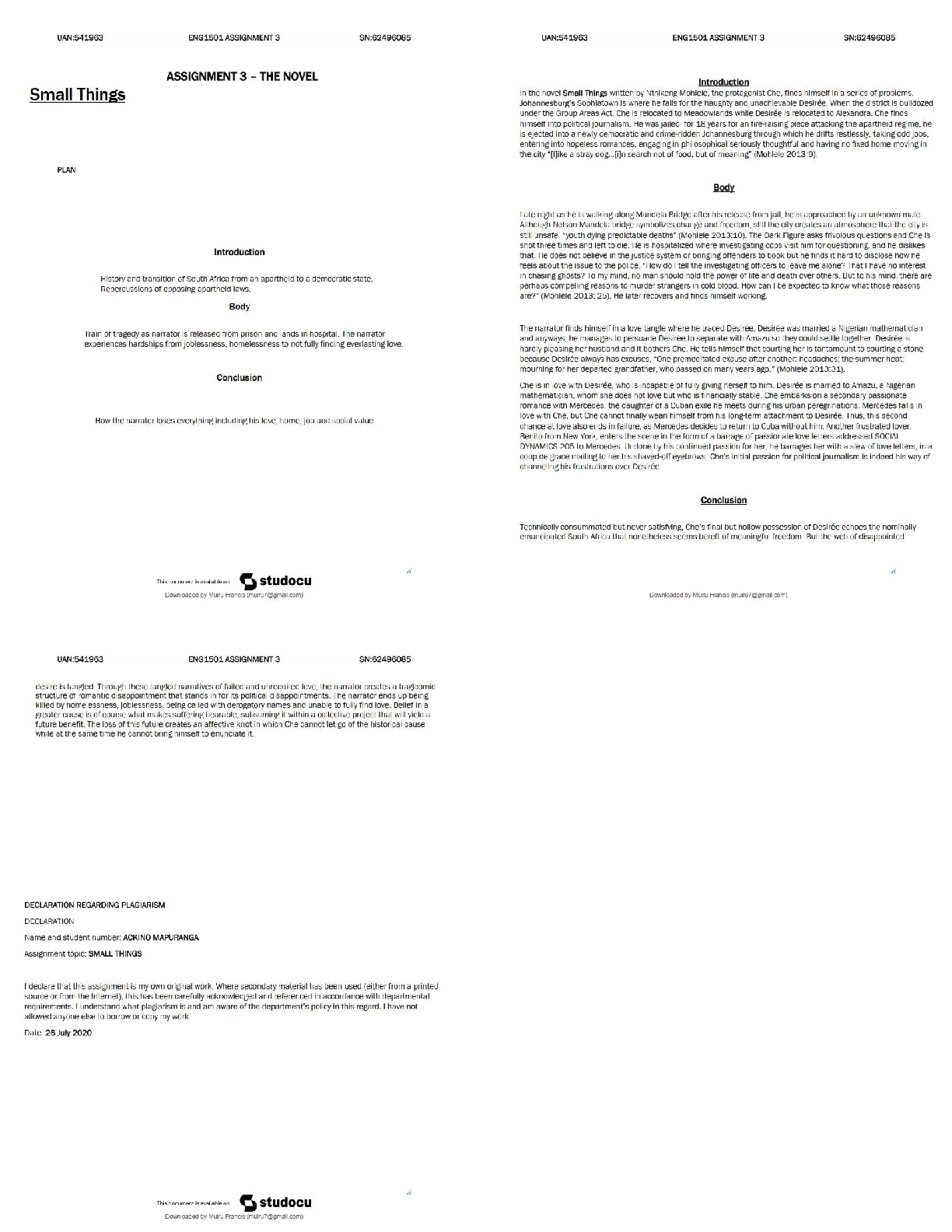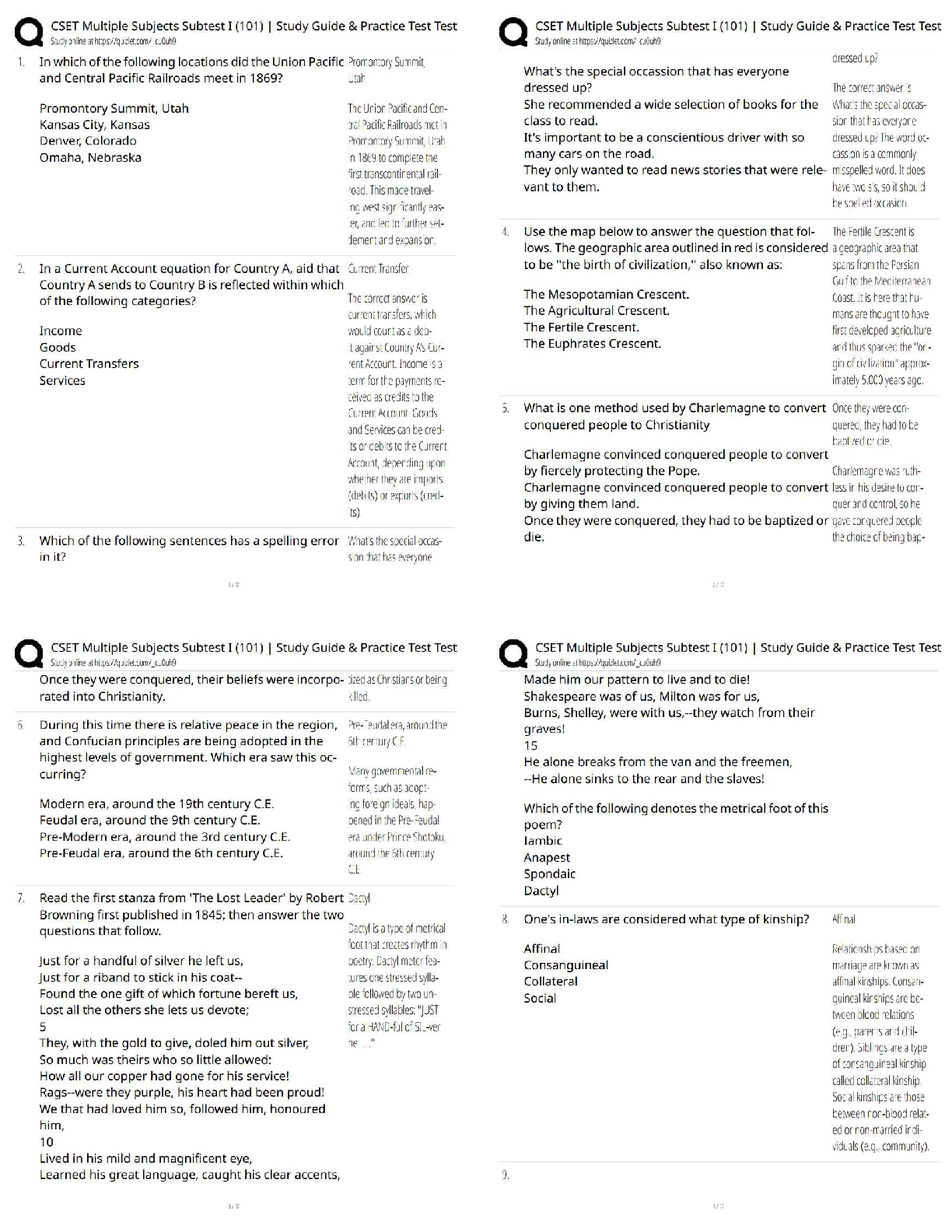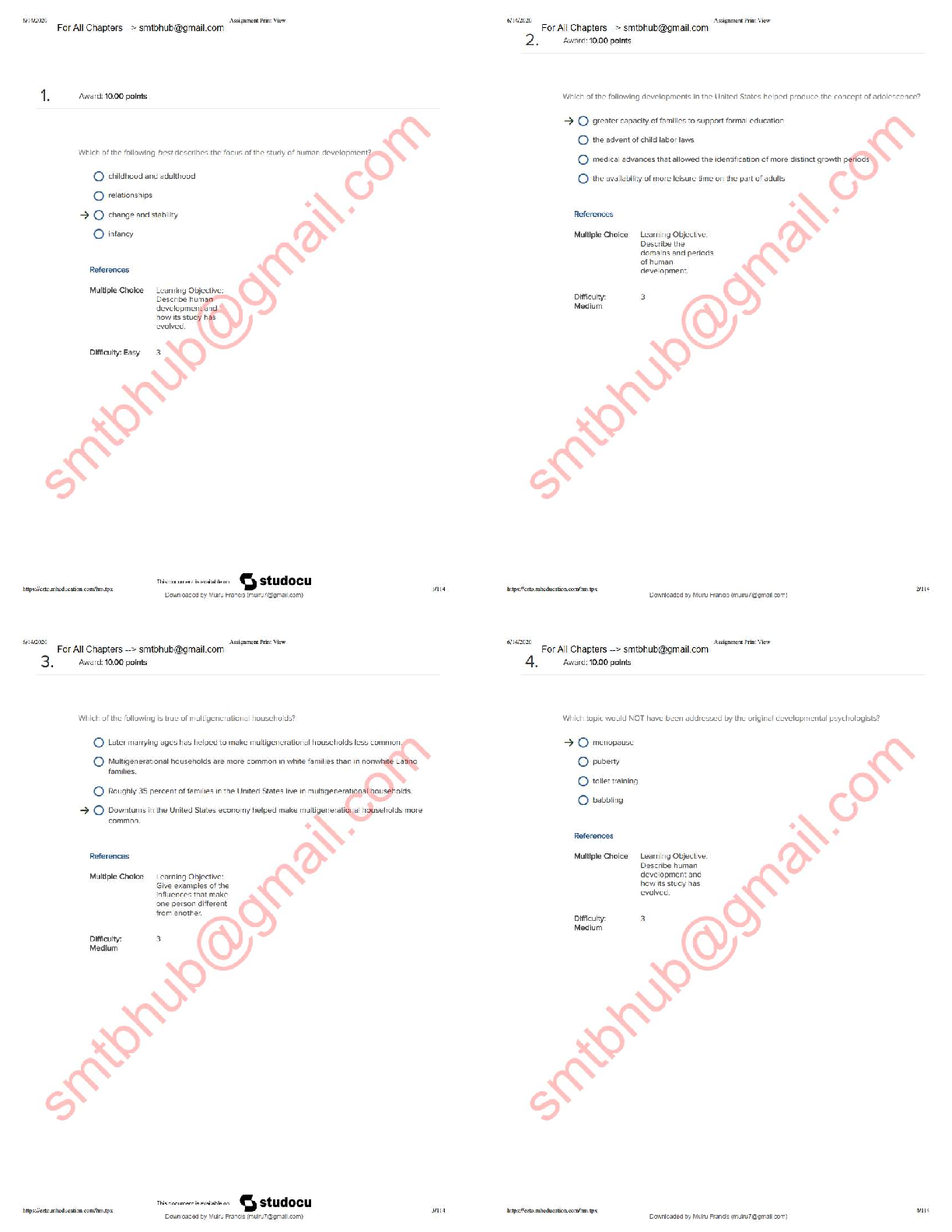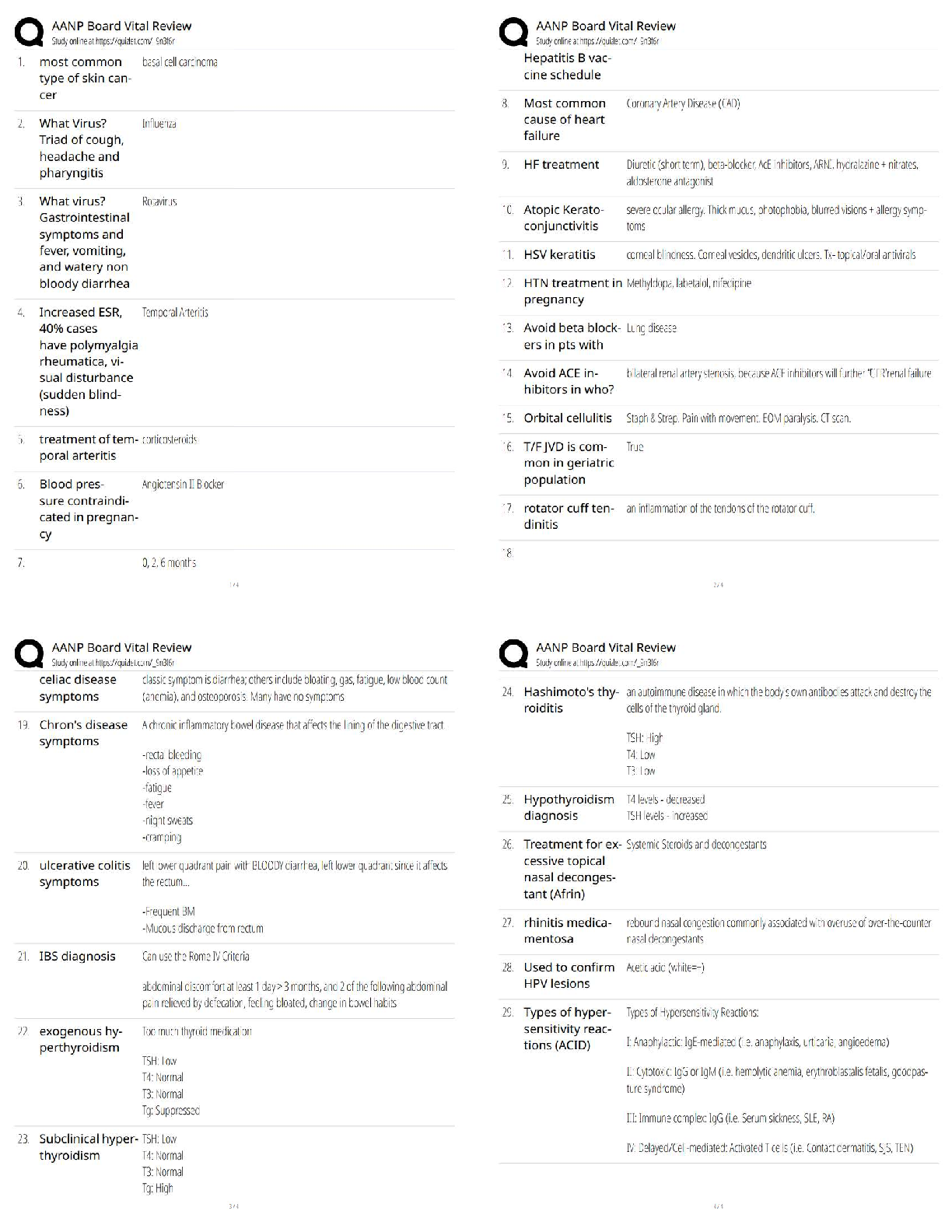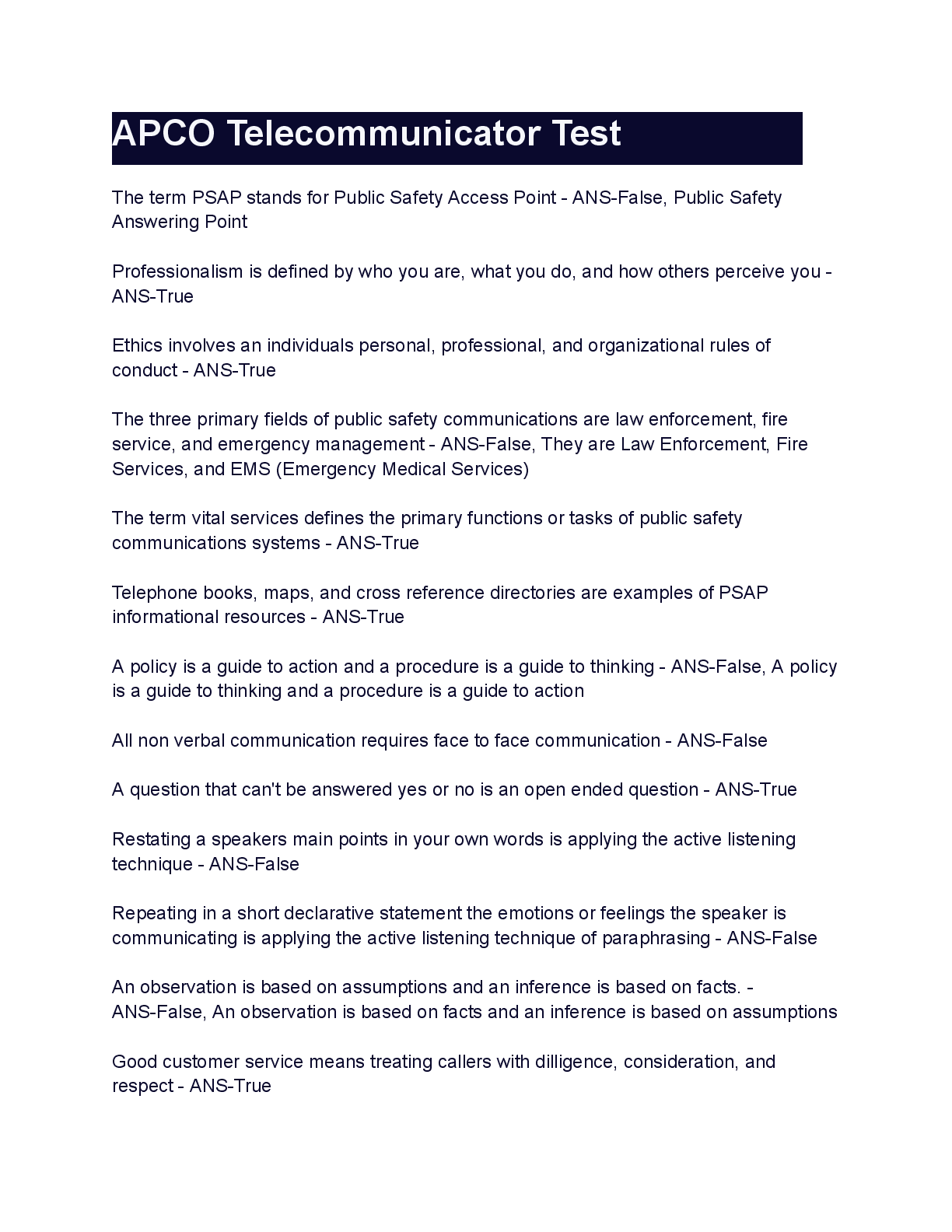*NURSING > QUESTIONS and ANSWERS > PN_Nursing_Care_of_Children_Practice_B.docx (All)
PN_Nursing_Care_of_Children_Practice_B.docx
Document Content and Description Below
A nurse is reinforcing teaching with the guardians of a school-age child who has frequent nosebleeds. Which of the following instructions should the nurse include? - Apply pressure to the child’s no ... se—for a least 10 min to decrease bleeding—also instruct the guardians to tilt the child’s head forward, because this position prevents aspiration of the blood. During a well-child visit, the parent of a toddler expresses concern to the nurse that the toddler takes several hours to fall asleep at night. Which of the following recommendations should the nurse make? - Provide the toddler with a favorite toy at bedtime—help the toddler to feel more secure and facilitate sleep. A nurse is caring for a toddler who has terminal cancer and is receiving hospice care. The child’s parent tells the nurse, “I’m a bad parent, and I can’t deal with this.” Which of the following responses should the nurse make? - Tell me more about what you are feeling—use open-ended statements that will allow the parent to share his feelings and emotions. During times of grief, the parent needs to express his emotions. The use of open ended statement relays the message that it is safe to do so with the nurse. A nurse is reinforcing teaching with the family of an adolescent client who was recently diagnosed with celiac disease. Which of the following foods should the nurse recommend? - Yellow corn—unable to process gluten, a protein found in wheat, barley, rye and oats— client’s diet is restricted to foods that are free of gluten, such as corn, rice and millet. A nurse is collecting data from a child during a well child visit. The nurse should recognize that which of the following findings places the child at a higher risk for abuse? - The child was born at 30 weeks of gestation—children who are born prematurely are at greater risk for abuse because of the potential for impaired bonding during early infancy. A nurse is reinforcing dietary teaching with the parent of a 2 year old toddler. Which of the following should the nurse include in the teaching? - An appropriate serving size is 1 tablespoon of food per year of age—serving size for a 2 year old toddler is 1 tbsp of food per year of age. A nurse is reviewing the plan of care for a child who has cystic fibrosis. Which of the following is the priority goal for this child? - The child will maintain an effective breathing pattern—manifestations of cystic fibrosis, such as chronic cough, pulmonary infection and bronchiolar obstruction lead to severely impaired ventilation and gas exchange, which causes long-term pulmonary complications. Therefore, when utilizing the airway, breathing, circulation approach to client care, maintaining an effective breathing pattern is the priority goal for the child who has cystic fibrosis. This study source was downloaded by 100000816392744 from CourseHero.com on 04-21-2021 13:42 [Show More]
Last updated: 3 years ago
Preview 1 out of 9 pages

Buy this document to get the full access instantly
Instant Download Access after purchase
Buy NowInstant download
We Accept:

Reviews( 0 )
$8.00
Can't find what you want? Try our AI powered Search
Document information
Connected school, study & course
About the document
Uploaded On
May 10, 2021
Number of pages
9
Written in
All
Additional information
This document has been written for:
Uploaded
May 10, 2021
Downloads
0
Views
80






_removed.png)
